Idea by
Moa Liew and Christel Nisbeth
Within Walls
Call for ideas 2016
Monument of Anxiety
Monument of Anxiety

Architecture is more important than ever. Today more than 50%of all humans live in cities, which is why architects need to engage the residents in the design process. By talking about architecture through media that every one understands and in terms that engages the end users can participate in the architectural debate
Architecture has an effect upon our minds, movements and wellbeing. But how do we control these signals? And how do we depict them, before a building is even raised? Construction is expensive; it is cheaper to edit a drawing than a building. That is why we need to develop methods that can open the creative process of buildings and cities
In Monument of Anxiety we have tested the potential of combining the architectural and filmic process into new methods. Methods that help us control and shape the spatial signals within architecture, but at the same time, visual and informative tools that enables us to immediately communicate our design during the creative process

STORYBOARD EXAMPLE
Material: Black granite cobbles
Sound: City life. Up to 4.000 people cross Kultorvet per hour. No cars.
Dramaturgy: Climax. From the long round corridor one enters a perfectly circular crater. From the bottom (14m below Kultorvet) one only sees the sky and the top of the surrounding buildings.
Prop: Demanding Prop. The mere size of the dome, and the fact that the visitor will find itself at the centre in the bottom is a strong spatial, psychological and bodily experience.

SPATIAL STORYBOARD
The spatial storyboard functions as an addition to the classic plan, section, elevation and renderings. The potentials of working with architectural storyboards is that it enables us to address architectural experiences such as describing the acoustics, materials, spatial relations and bodily experience. Another advantage is that this media is inviting to the broader public,it enables us to communicate and start architectural discussions in the beginning of the design process

PROPS
All objects transmit information, may it be iconic, physical (demanding) or atmospheric messages. By categorising architectural elements, such as the stair, information signs or openings, one can become more aware of the physical and mental informations that space sends.

DRAMATURGY
One of the ways to combine the representation and creation of a narrative space was through dramaturgy and storyboards. The use of a linear dramaturgy -in this specific project- enabled us to perceive and represent the structure as a spatial-experience. You never experience architecture as a detached object. One space always succeeds another.
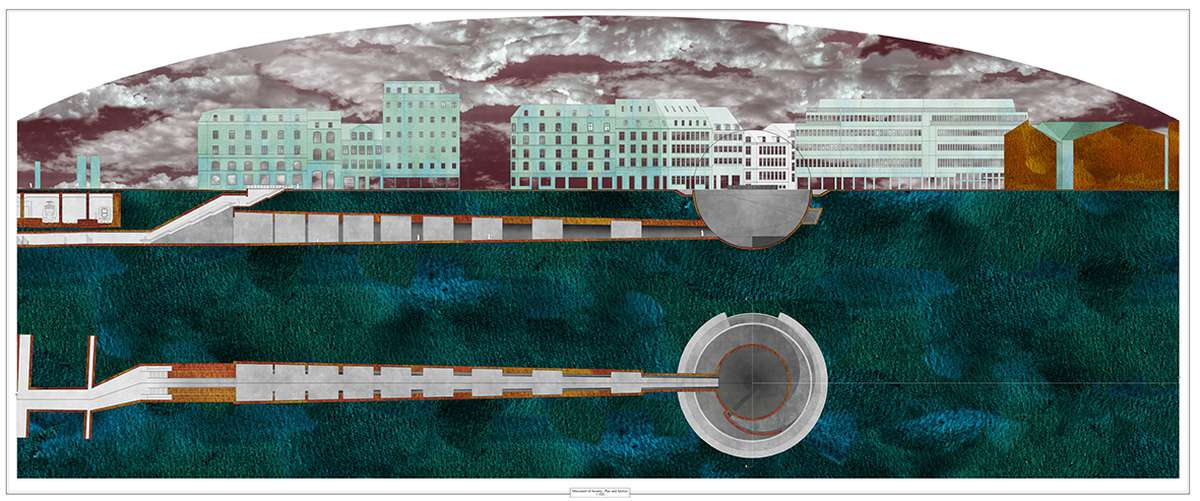
1:100 section of the Monument. The monument is placed 14m under ground in connection to the one of the busiest metro exits in Copenhagen. It consists of a 30m long corridor with nine round gates, ending in a massive circular crater. One exits the crater through a spiral staircase, going around the crater. From the stairs, made of echoing metal, and arrives in the middle of the square, Kultorvet.
Monument of Anxiety
Monument of Anxiety

Architecture is more important than ever. Today more than 50%of all humans live in cities, which is why architects need to engage the residents in the design process. By talking about architecture through media that every one understands and in terms that engages the end users can participate in the architectural debate
Architecture has an effect upon our minds, movements and wellbeing. But how do we control these signals? And how do we depict them, before a building is even raised? Construction is expensive; it is cheaper to edit a drawing than a building. That is why we need to develop methods that can open the creative process of buildings and cities
In Monument of Anxiety we have tested the potential of combining the architectural and filmic process into new methods. Methods that help us control and shape the spatial signals within architecture, but at the same time, visual and informative tools that enables us to immediately communicate our design during the creative process
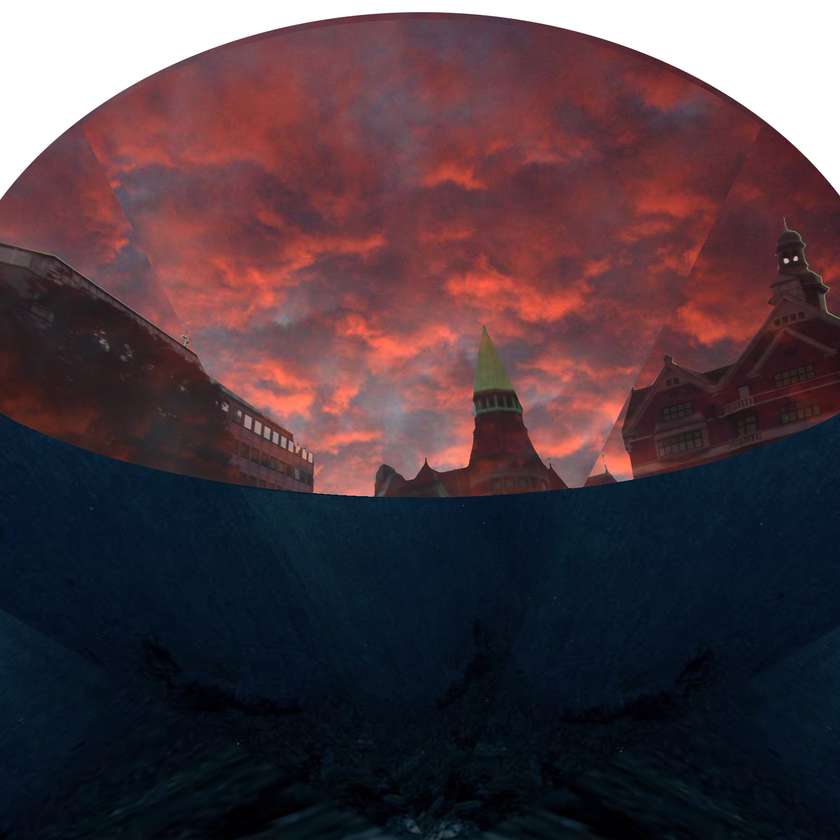
STORYBOARD EXAMPLE
Material: Black granite cobbles
Sound: City life. Up to 4.000 people cross Kultorvet per hour. No cars.
Dramaturgy: Climax. From the long round corridor one enters a perfectly circular crater. From the bottom (14m below Kultorvet) one only sees the sky and the top of the surrounding buildings.
Prop: Demanding Prop. The mere size of the dome, and the fact that the visitor will find itself at the centre in the bottom is a strong spatial, psychological and bodily experience.
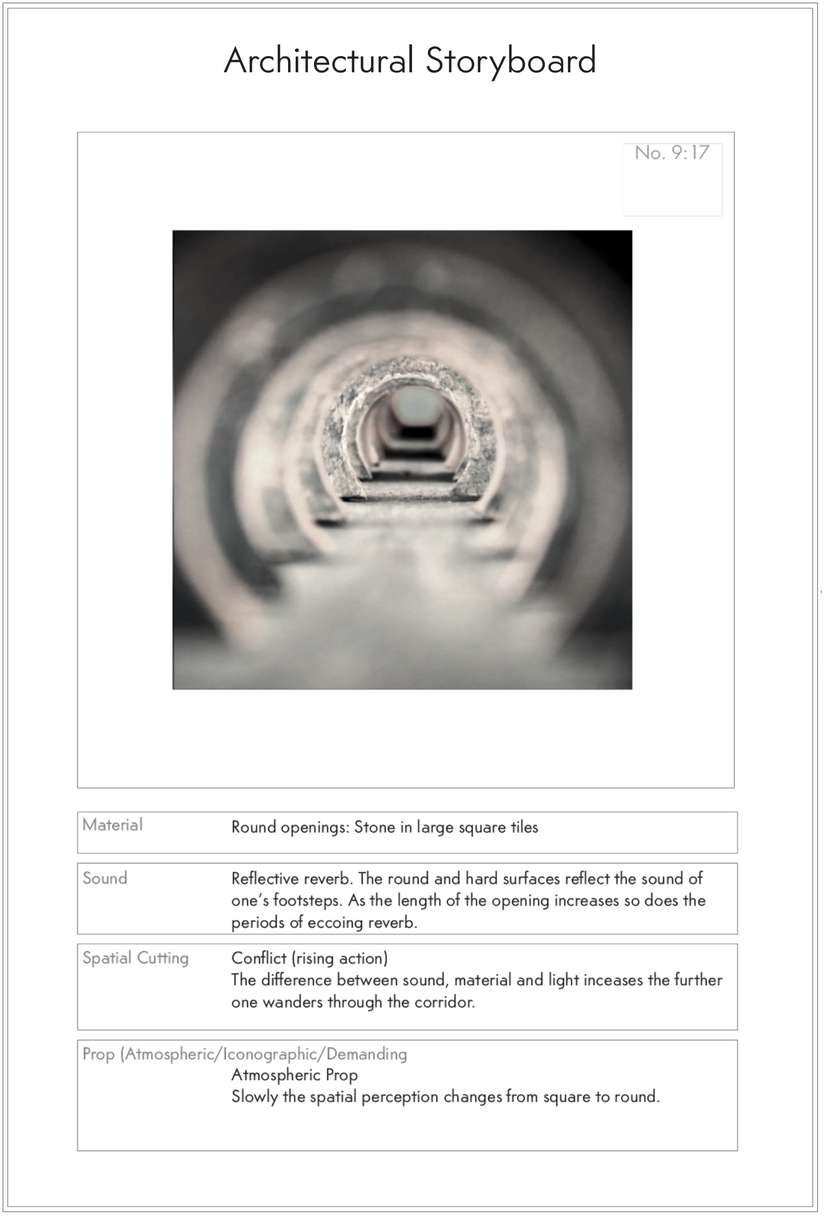
SPATIAL STORYBOARD
The spatial storyboard functions as an addition to the classic plan, section, elevation and renderings. The potentials of working with architectural storyboards is that it enables us to address architectural experiences such as describing the acoustics, materials, spatial relations and bodily experience. Another advantage is that this media is inviting to the broader public,it enables us to communicate and start architectural discussions in the beginning of the design process
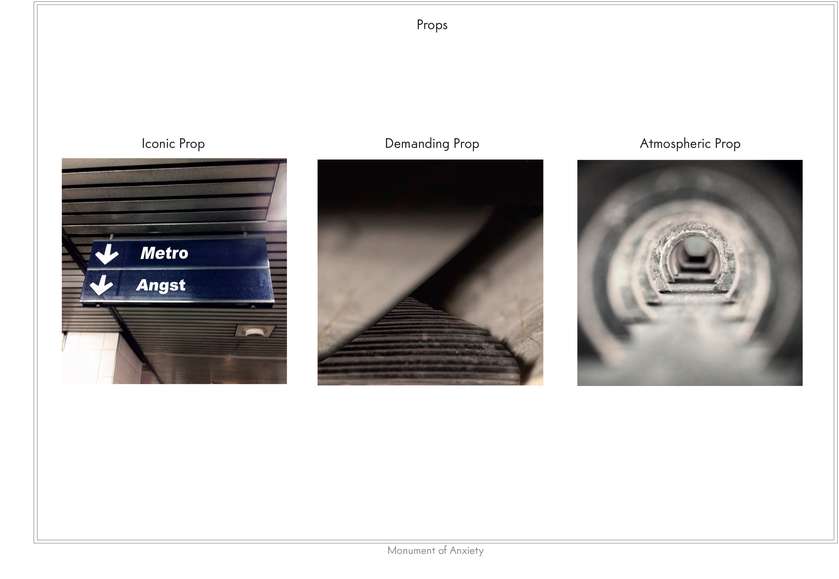
PROPS
All objects transmit information, may it be iconic, physical (demanding) or atmospheric messages. By categorising architectural elements, such as the stair, information signs or openings, one can become more aware of the physical and mental informations that space sends.
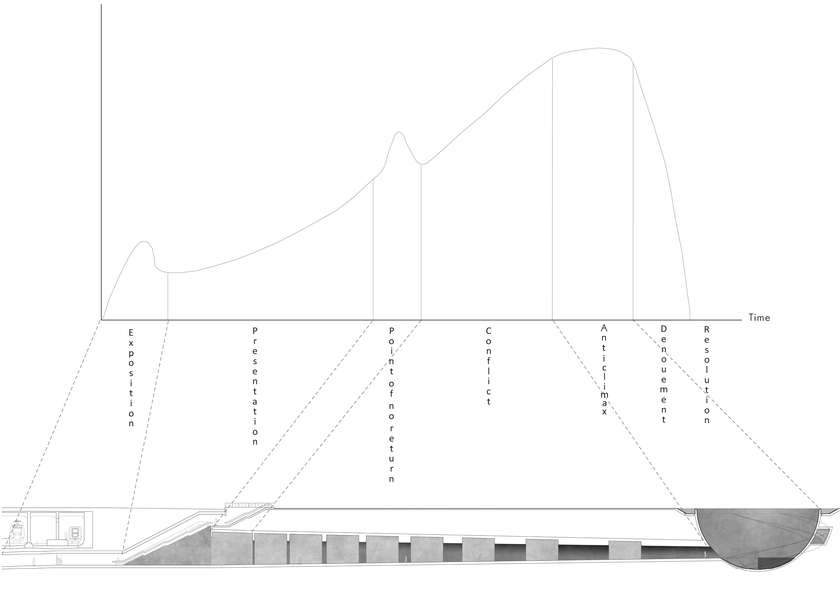
DRAMATURGY
One of the ways to combine the representation and creation of a narrative space was through dramaturgy and storyboards. The use of a linear dramaturgy -in this specific project- enabled us to perceive and represent the structure as a spatial-experience. You never experience architecture as a detached object. One space always succeeds another.

1:100 section of the Monument. The monument is placed 14m under ground in connection to the one of the busiest metro exits in Copenhagen. It consists of a 30m long corridor with nine round gates, ending in a massive circular crater. One exits the crater through a spiral staircase, going around the crater. From the stairs, made of echoing metal, and arrives in the middle of the square, Kultorvet.